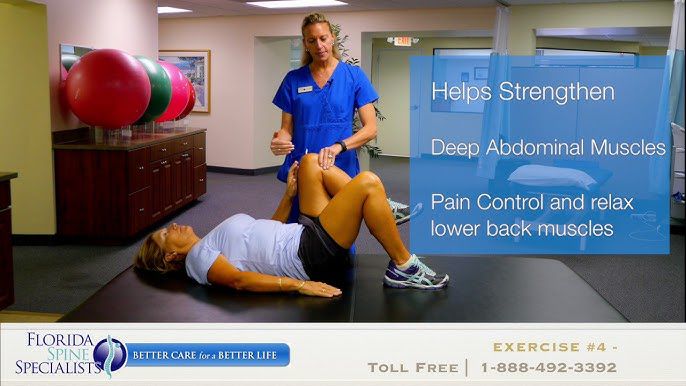Are you worried what is vertebrogenic low back pain and how to cure it? Vertebrogenic low back pain is a type of chronic pain that originates from the vertebral endplates, the surfaces of the vertebrae that articulate with the intervertebral discs.
This type of pain is often characterized by a dull ache in the lower back that is made worse by activity, sitting, and bending forward. The most common cause of vertebrogenic low back pain is degeneration of the vertebral endplates.
This can be caused by a number of factors, including age, injury, and repetitive stress. Other possible causes include inflammation, infection, and tumor. There is no one-size-fits-all treatment for vertebrogenic low back pain. Let’s get into further details!
Table of Contents
How Does Vertebrogenic Low Back Pain Work?
There are three main mechanisms that contribute to vertebrogenic low back pain:
- Pain signals and sensitization: As the pain persists, the nerves can become sensitized, meaning that they send pain signals even when there is no actual damage present. This can lead to chronic pain.
- Nerve compression and irritation: When the endplates become damaged, they can press on the nerves that run through the spine.
- Inflammation and swelling: The inflammation that occurs around the damaged endplates can also contribute to pain. This inflammation can cause the release of chemicals that sensitize the nerves, making them more likely to send pain signals to the brain.
Vertebragenic low back pain is caused by damage to the vertebral endplates, the surfaces of the vertebrae that attach to the intervertebral discs. These endplates are innervated by nerves, which means that they can sense pain.
When the endplates are damaged, they can become inflamed and irritated, which can send pain signals to the brain. The potential reasons that cause vertebrogenic pain are:
- Muscle imbalances and weakness: If the muscles in your lower back are weak or imbalanced, they may not be able to properly support your spine. This can lead to pain, as well as other symptoms such as instability and fatigue.
- Spinal misalignment: If the vertebrae in your spine are not aligned properly, it can put extra stress on the vertebral endplates.
- Disc degeneration: As we age, our discs naturally degenerate and lose some of their flexibility. This can lead to increased stress on the vertebral endplates, which can eventually cause pain.
- Facet joint dysfunction: If these joints become injured or dysfunctional, it can cause pain in the lower back.
The pain from vertebrogenic low back pain can be mild or severe, and it can be constant or intermittent. The pain can also be relieved with rest.
Symptoms Of Vertebrogenic Low Back Pain:
The symptoms of vertebrogenic low back pain can amazingly vary from one person to another person, but they typically include:
- Pain that is worse with activity
- Numbness or tingling in the back, legs, or buttocks
- Pain that is worse with prolonged sitting
- Pain in the lower back
- Pain that is worse with bending forward
Diagnosis And Treatment Of Vertebrogenic Low Back Pain
The diagnosis of vertebrogenic low back pain is typically made based on a physical examination and medical history. Treatment options may include:
- Physical therapy
- Rest
- Over-the-counter pain medication
- Injections
- Ice or heat therapy
- Surgery
Treatment Options For Vertebragenic Low Back Pain
The treatment for vertebrogenic low back pain depends on the severity of the pain and the underlying cause. However, other cases may require more aggressive treatment.
Non-surgical Treatment Options:
- Pain medications and anti-inflammatories: Pain medications, such as nonsteroidal anti-inflammatory drugs (NSAIDs), can help to reduce pain and inflammation.
- Physical therapy and exercise: With proper therapy, it can help to strengthen the muscles in the back and improve flexibility.
- Chiropractic care and spinal manipulation: Chiropractic care and spinal manipulation can help to reduce pain and improve the range of motion.
Surgical Treatment Options:
- Discectomy and microdiscectomy: Discectomy is a surgery that removes a portion of the intervertebral disc.
- Artificial disc replacement: Artificial disc replacement is a surgery that replaces a damaged intervertebral disc with an artificial disc. This can help to improve pain relief and function.

Here are some additional tips for managing vertebrogenic lower back pain:
Lose weight if you are overweight or obese: Excess weight can put extra strain on your back.
- Use a mattress that supports your back: A firm mattress can help to keep your spine in alignment.
- Avoid prolonged sitting or standing: If you have to sit for long periods of time, get up and move around every 20-30 minutes.
- Good posture: Good posture can help to reduce stress on your back.
- Get regular exercise: Exercise can help to strengthen your back muscles and improve your flexibility.
- Proper lifting techniques: When you lift, bend your knees and keep your back straight.
Related Posts:
- How to Get Rid of Back Ache Naturally
- Best Way to Relieve Lower Back Pain
- Living with Spinal Stenosis
- Why Back Pain From Squats And Deadlifts
Frequently Asked Questions (FAQs)
1. What are the treatment options for vertebrogenic low back pain?
The treatment for vertebrogenic low back pain depends on the severity of the pain and the underlying cause. In some cases, the pain may go away on its own with rest and over-the-counter pain medication. However, other cases may require more aggressive treatment, such as physical therapy, injections, or surgery.
2. What are some tips for managing vertebrogenic low back pain?
In addition to the treatment options listed above, there are some other things you can do to manage vertebrogenic low back pain, such as losing weight if you are overweight or obese, maintaining good posture, and using proper lifting techniques.
3. What are the symptoms of vertebrogenic low back pain?
You may experience pain in your lower back that is worse with activity, sitting, and bending forward. You may also have numbness or tingling in your back, legs, or buttocks.
The Bottom Line
Vertebragenic low back pain originates from the vertebral endplates, causing a dull ache in the lower back that worsens with activity, sitting, and bending forward. Treatment options include physical therapy, medication, injections, and surgery.
Managing this condition involves weight loss, maintaining good posture, proper lifting techniques, and regular exercise. Remember to consult a doctor for diagnosis and tailored treatment options to improve your quality of life.


